Old Dog
Well-known member
This is another of my attempts to clear the shelf of ignore. This kit was started back in 2009 and has been on and off the shelf a number of times over the years. This is the 1/48 scale Czech model kit but first a little history of the prototype.
The Curtiss Seamew was designed as a successor to the Curtiss SOC series and followed the traditional formula for a scout-observation aircraft convertible for land or seaplane duties with interchangeable wheel and float undercarriages. Intended for catapult launching from warships, it was not an unqualified success. It saw limited operational service and in fact was outlived by the aircraft that it was intended to replace.
Design work began in 1937and Curtiss received a prototype development contract on May 9, 1938. It flew for the first time on October 6, 1939. While undergoing trials as a float plane a large ventral fin was added to the rear fuselage and subsequently the vertical tail surfaces were redesigned and enlarged. As flight testing progressed it became obvious that the wing dihedral was insufficient. Increasing the dihedral would have required major airframe modifications so the effect was obtained by turning up the wingtips.
In addition to its primary role the SO3C was intended for antisubmarine and inshore patrol in its land plane configuration but to carry two 325 pound depth bombs for these tasks it was necessary to remove the pilot armor and the flexible 30 caliber gun with its ammunition together with the fuselage fuel tank and replace the self sealing oil tank with a non sealing type. The narrow track under carriage was set so far aft that a very steep ground angle resulted and ground handling and landing characteristics suffered as a result. This coupled with generally poor performance and poor flying characteristics did not make them very popular. As a consequence a large number were converted to radio controlled target drones. Two hundred and fifty were to be delivered to Britain for use by the Fleet Air Arm but only one hundred and fifty actually reached Britain where they saw no operational service serving in the training role. A total of eight hundred machines were built, the last being delivered in January of 1944 shortly before the aircraft was withdrawn from service.
Like most builds it starts with the innards. The kit has a very nice set of resin parts to make up the pilot and radio operator's station, limited only by my lack of talent to paint it. Shown first before being installed into the fuselage then after.
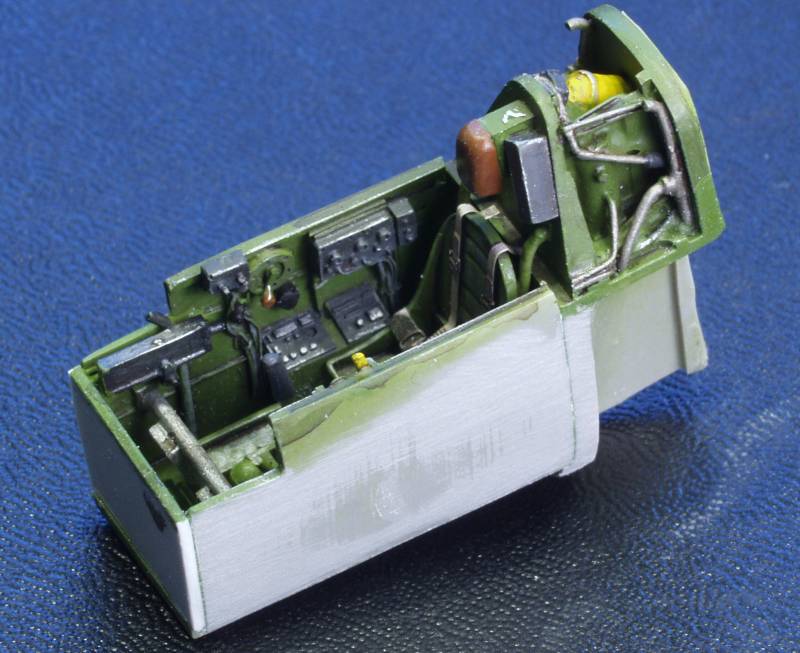
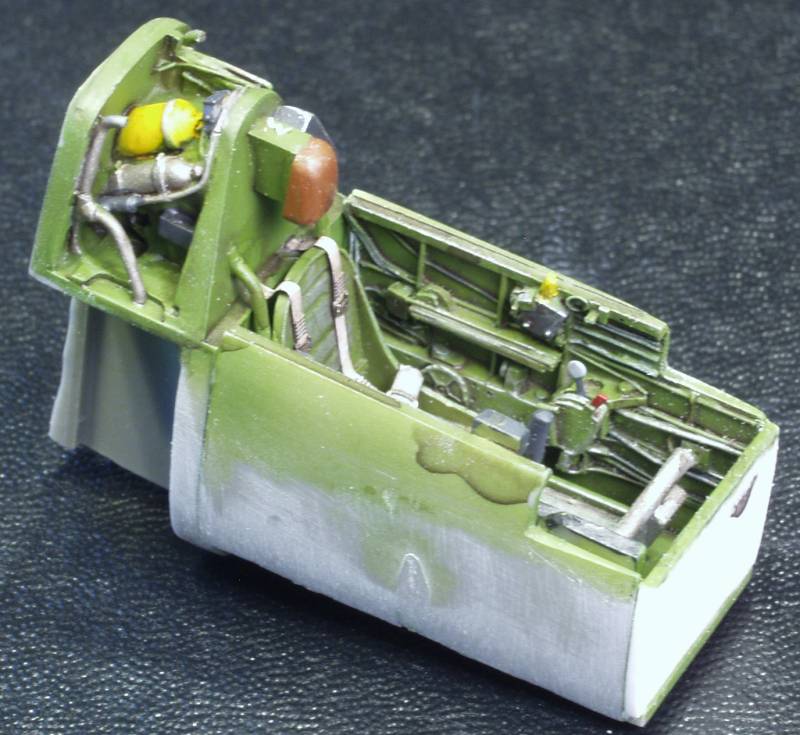
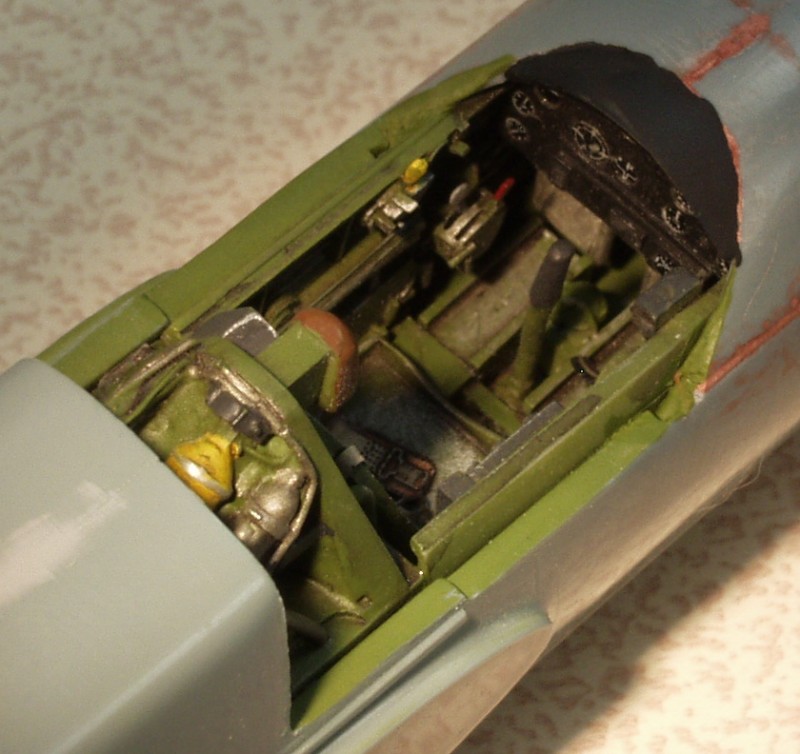
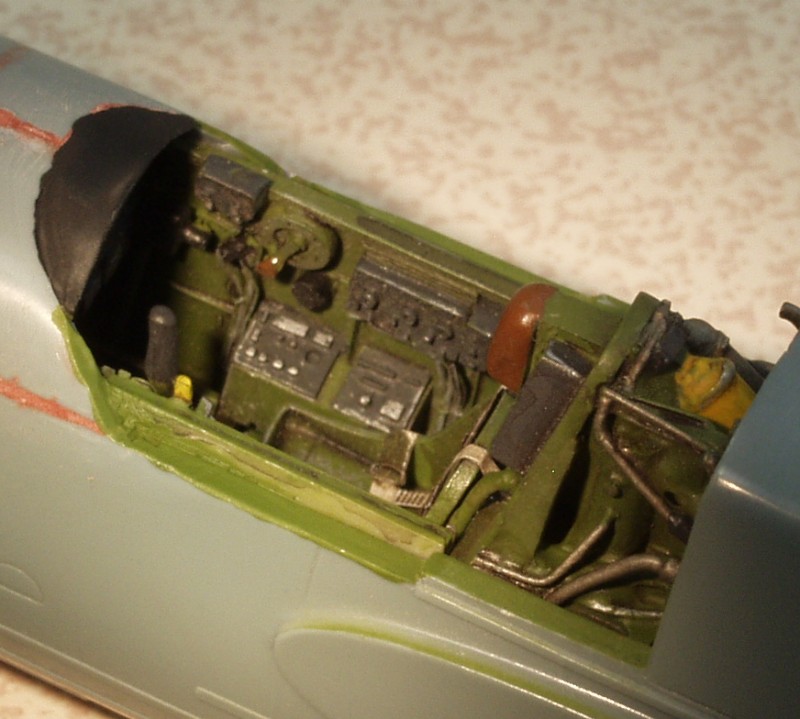
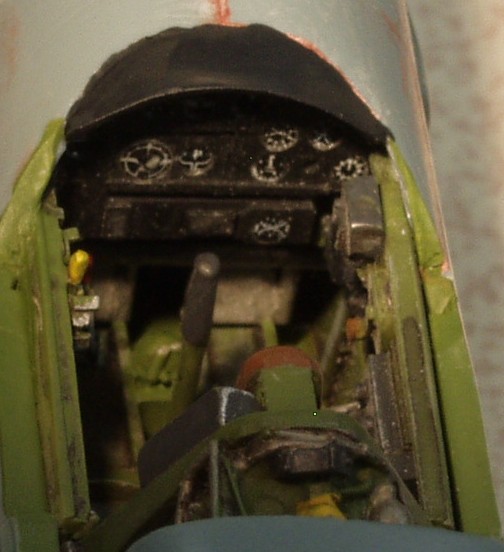
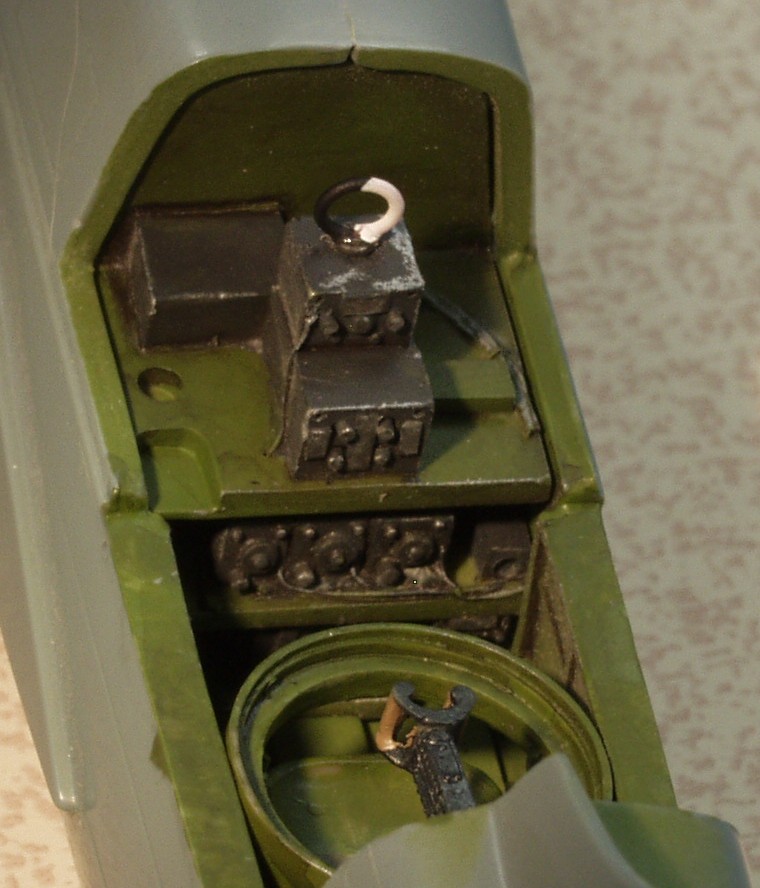
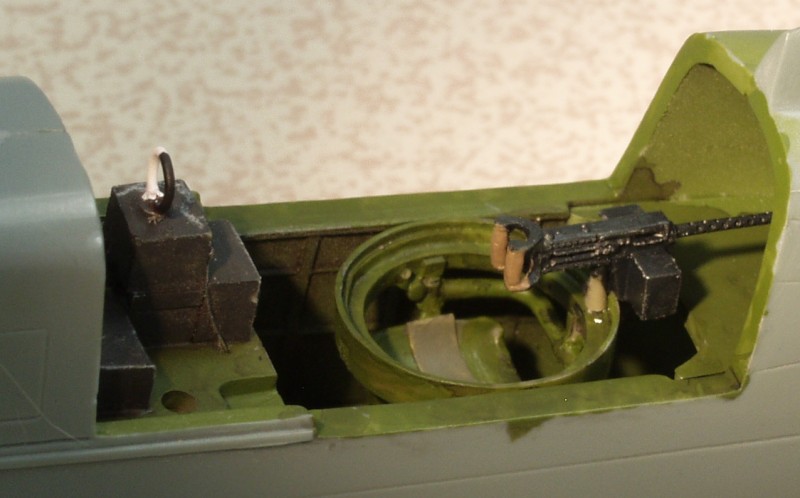
I wish I could say something nice about the kit but I really can't. Nothing fit very well and the plastic is all very thick. This was most noticeable at the wing trailing edge were the thickness was about four scale inches. I lost track of how many sanding sticks I used to get this down to a reasonable thickness but at times I considered using a belt sander.
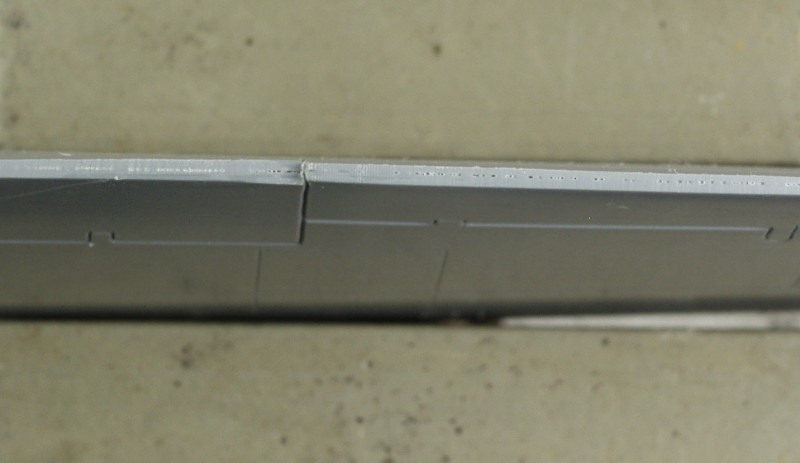
Needless to say this one was on and off the shelf of doom numerous times and it seemed like the kit knew I didn't like it as every time I fixed one issue another one popped up. Anyway it's done now. The kit is marked as an aircraft assigned to the USS Biloxi, a Cleveland class light cruiser. I didn't weather it heavily as in combat zones the average life of them was about three weeks. While interesting looking, the planes were pretty much failures all round and the sad thing was in spite of this the government bought 800 of them anyway, so war junk is a good name. While one might tend to blame Curtiss, they were required to use an engine that never met its performance ratings and suffered from over heating problems. Anyway here are the completion shots...
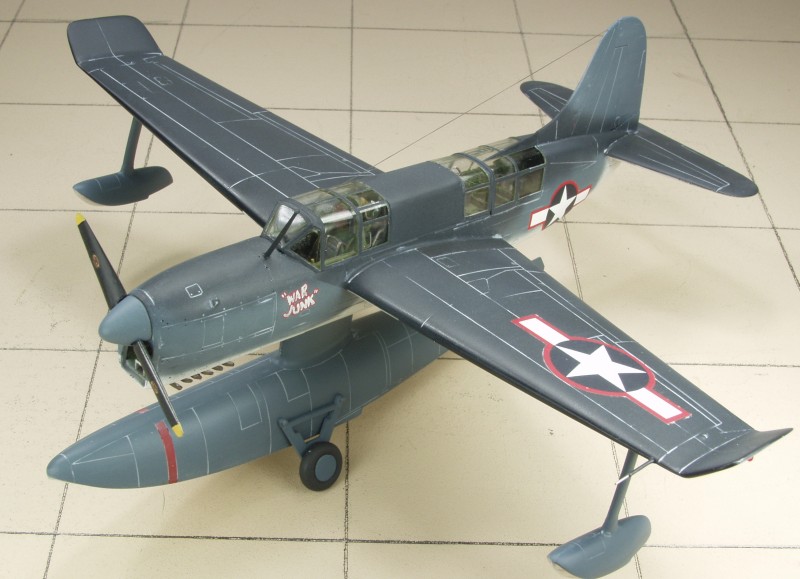
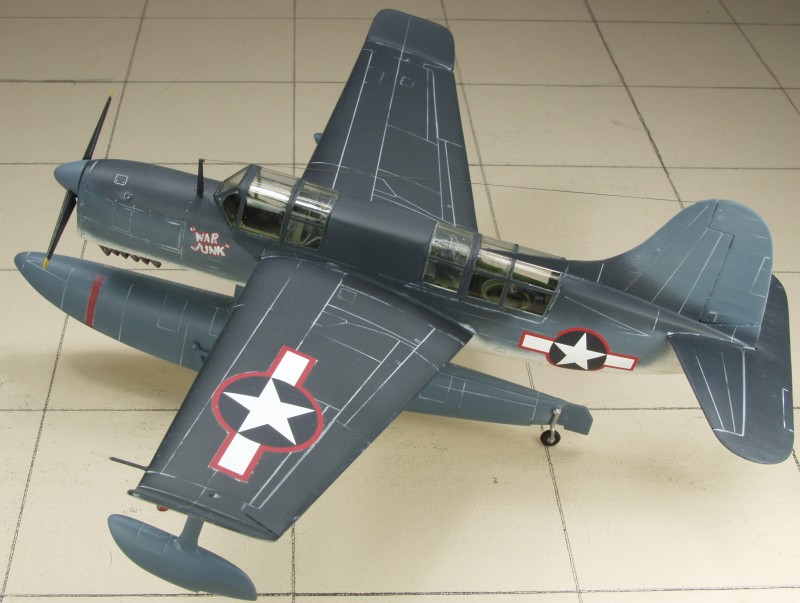
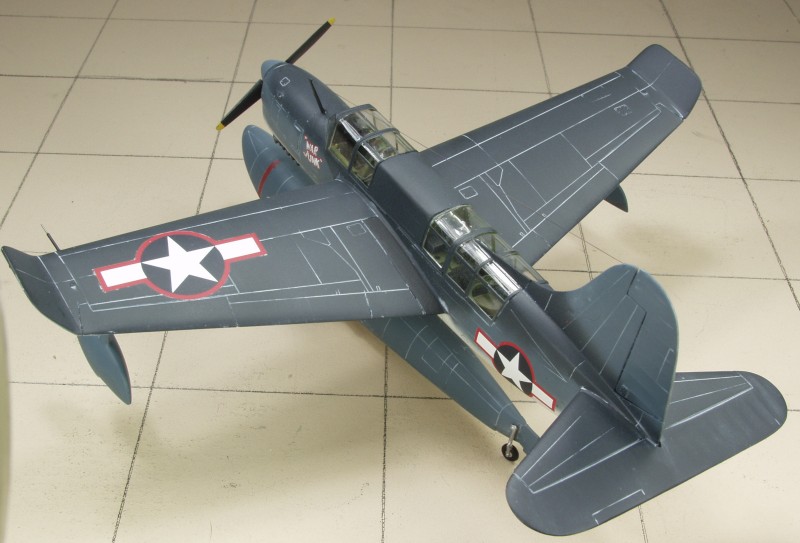

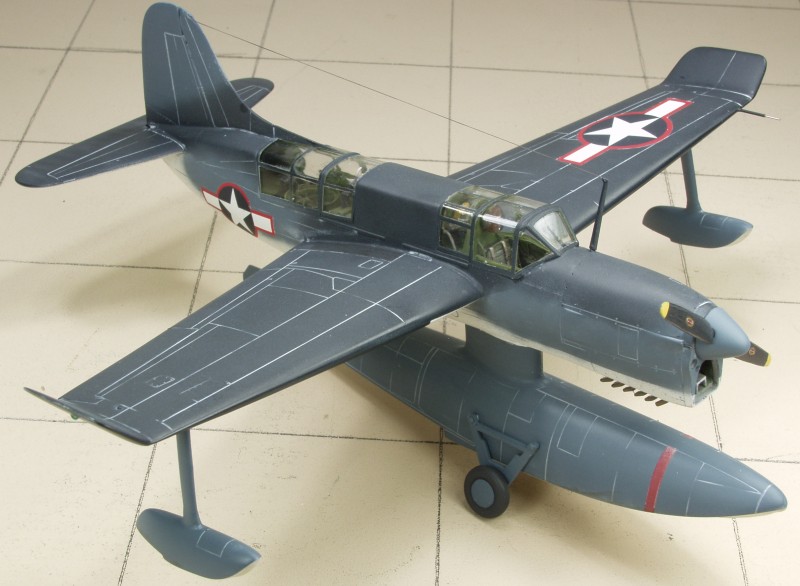
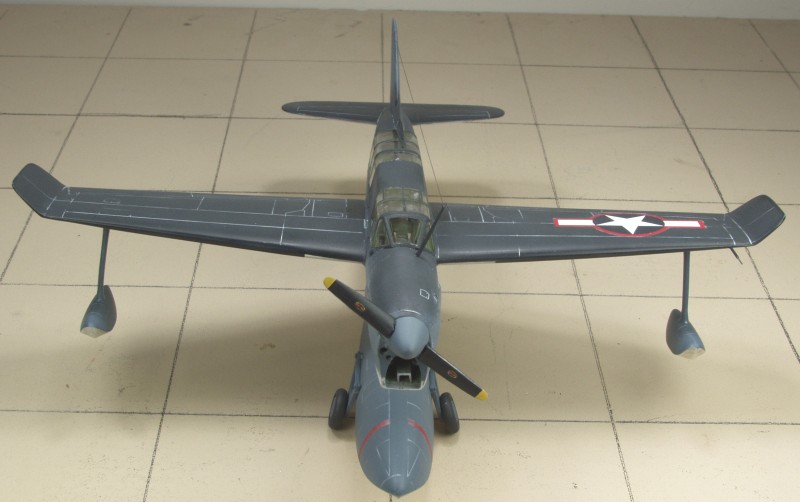
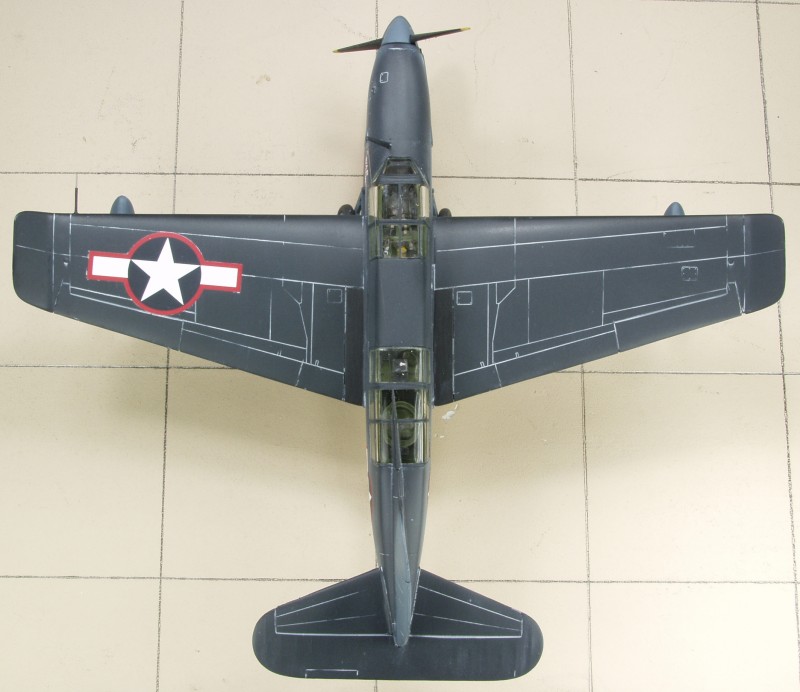
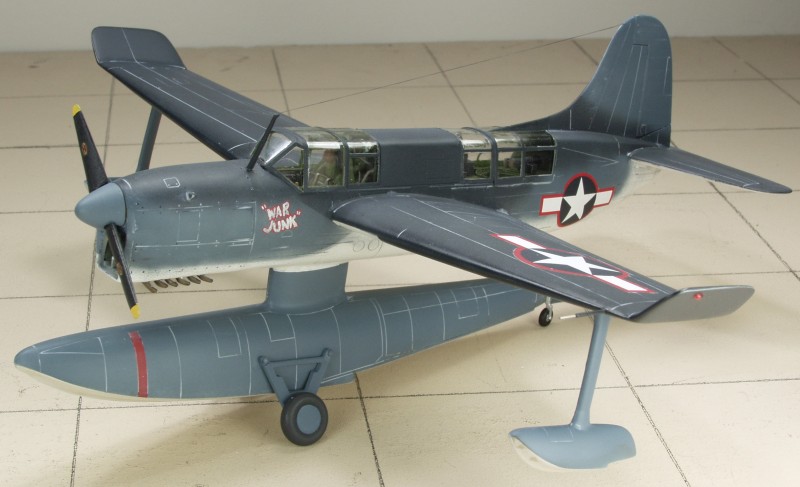
So there it is, unless you really want one of these I can't in all honestly recommend the kit.
Thanks for looking !
The Curtiss Seamew was designed as a successor to the Curtiss SOC series and followed the traditional formula for a scout-observation aircraft convertible for land or seaplane duties with interchangeable wheel and float undercarriages. Intended for catapult launching from warships, it was not an unqualified success. It saw limited operational service and in fact was outlived by the aircraft that it was intended to replace.
Design work began in 1937and Curtiss received a prototype development contract on May 9, 1938. It flew for the first time on October 6, 1939. While undergoing trials as a float plane a large ventral fin was added to the rear fuselage and subsequently the vertical tail surfaces were redesigned and enlarged. As flight testing progressed it became obvious that the wing dihedral was insufficient. Increasing the dihedral would have required major airframe modifications so the effect was obtained by turning up the wingtips.
In addition to its primary role the SO3C was intended for antisubmarine and inshore patrol in its land plane configuration but to carry two 325 pound depth bombs for these tasks it was necessary to remove the pilot armor and the flexible 30 caliber gun with its ammunition together with the fuselage fuel tank and replace the self sealing oil tank with a non sealing type. The narrow track under carriage was set so far aft that a very steep ground angle resulted and ground handling and landing characteristics suffered as a result. This coupled with generally poor performance and poor flying characteristics did not make them very popular. As a consequence a large number were converted to radio controlled target drones. Two hundred and fifty were to be delivered to Britain for use by the Fleet Air Arm but only one hundred and fifty actually reached Britain where they saw no operational service serving in the training role. A total of eight hundred machines were built, the last being delivered in January of 1944 shortly before the aircraft was withdrawn from service.
Like most builds it starts with the innards. The kit has a very nice set of resin parts to make up the pilot and radio operator's station, limited only by my lack of talent to paint it. Shown first before being installed into the fuselage then after.







I wish I could say something nice about the kit but I really can't. Nothing fit very well and the plastic is all very thick. This was most noticeable at the wing trailing edge were the thickness was about four scale inches. I lost track of how many sanding sticks I used to get this down to a reasonable thickness but at times I considered using a belt sander.

Needless to say this one was on and off the shelf of doom numerous times and it seemed like the kit knew I didn't like it as every time I fixed one issue another one popped up. Anyway it's done now. The kit is marked as an aircraft assigned to the USS Biloxi, a Cleveland class light cruiser. I didn't weather it heavily as in combat zones the average life of them was about three weeks. While interesting looking, the planes were pretty much failures all round and the sad thing was in spite of this the government bought 800 of them anyway, so war junk is a good name. While one might tend to blame Curtiss, they were required to use an engine that never met its performance ratings and suffered from over heating problems. Anyway here are the completion shots...








So there it is, unless you really want one of these I can't in all honestly recommend the kit.
Thanks for looking !


